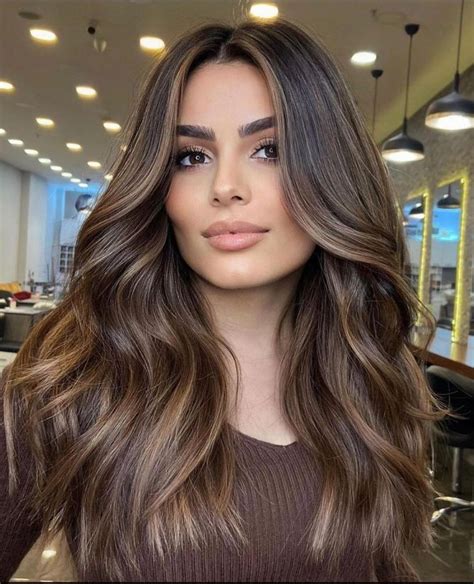Choosing the right hair color can transform your look and boost your confidence. With so many options available, it can be overwhelming to find the perfect shade that complements your skin tone, eye color, and personal style. This comprehensive guide will provide you with all the information you need to make an informed decision about the best hair color for you.

Hair Color and Skin Tone
The first step in choosing a hair color is to consider your skin tone. There are three main skin tone categories:
- Cool skin tones: Have pink or bluish undertones, and look best with hair colors that have ash, silver, or blue hues.
- Warm skin tones: Have yellow or golden undertones, and look best with hair colors that have warm tones, such as copper, gold, or brown.
- Neutral skin tones: Can wear both cool and warm hair colors, depending on their preference.
Cool Hair Colors for Cool Skin Tones:
- Platinum blonde
- Ash brown
- Ice blue
- Silver gray
- Violet red
Warm Hair Colors for Warm Skin Tones:
- Honey blonde
- Golden brown
- Auburn
- Caramel brown
- Chestnut red
Versatile Hair Colors for Neutral Skin Tones:
- Medium brown
- Burgundy
- Chocolate brown
- Beige blonde
- Dark blonde
Hair Color and Eye Color
Another important factor to consider when choosing a hair color is your eye color. Certain hair colors can enhance the beauty of your eyes and make them stand out.
- Brown eyes: Look great with warm hair colors, such as golden brown, chestnut, or caramel.
- Blue eyes: Are complemented by cool hair colors, such as ash blonde, platinum, or silver.
- Green eyes: Can be enhanced by both warm and cool hair colors, such as golden brown, honey blonde, or auburn.
- Hazel eyes: Look stunning with a variety of hair colors, including brown, blonde, and red.
Hair Color and Personal Style
Your personal style should also play a role in your hair color decision. If you prefer a natural look, you may want to choose a hair color that is close to your natural shade. If you are bolder, you can experiment with more vibrant or unusual hair colors.
Natural Hair Colors:
- Light brown
- Medium brown
- Dark brown
- Black
- Blonde
Vibrant Hair Colors:
- Red
- Purple
- Blue
- Green
- Pink
Common Hair Color Mistakes to Avoid
- Going too dark: Dark hair colors can be aging and make you look tired. If you have light skin, stick to lighter hair colors.
- Going too light: Light hair colors can wash out your features and make you look pale. If you have dark skin, opt for a warmer hair color.
- Choosing the wrong shade: It is important to choose a hair color that complements your skin tone and eye color. Avoid hair colors that clash with your natural features.
- Over-processing your hair: Coloring your hair too often or using harsh chemicals can damage your hair and make it dry and brittle. Consult with a professional hair stylist to ensure that your hair is healthy enough for coloring.
Frequently Asked Questions
1. How often should I color my hair?
The frequency of hair coloring depends on several factors, including the type of dye used, the desired shade, and the rate of your hair growth. Generally, you should aim to color your hair every 4-6 weeks to maintain the desired color.
2. What are the different types of hair dyes?
There are three main types of hair dyes:
- Permanent hair dyes: Last for several months until the hair grows out.
- Semi-permanent hair dyes: Fade gradually over time, typically lasting 4-6 weeks.
- Temporary hair dyes: Wash out after 1-2 shampoos.
3. How do I choose the right hair dye for my hair type?
Consider your hair texture, porosity, and condition when choosing a hair dye. Bleaching, perming, or chemically treated hair may require a different dye formula than virgin hair.
4. What is the best way to color my hair at home?
- Use a high-quality hair dye kit specifically formulated for home use.
- Follow the instructions carefully, and perform a patch test 24 hours before applying the dye to check for any allergic reactions.
- Use a color-protecting shampoo and conditioner to prolong the color.
5. What are highlights and lowlights?
Highlights are lighter streaks of color added to the hair, while lowlights are darker streaks. They can add depth and dimension to your hair color.
6. How can I care for my colored hair?
- Use a sulfate-free shampoo and conditioner to prevent color fading.
- Limit the use of heat styling tools.
- Avoid chlorine and saltwater, which can fade hair color.
- Get regular trims to remove split ends and keep your hair healthy.
Conclusion
Choosing the right hair color can be a daunting task, but with the right information, you can make an informed decision that will enhance your appearance and boost your confidence. Remember to consider your skin tone, eye color, personal style, and hair health when selecting a hair color. By following these guidelines and avoiding common mistakes, you can achieve a stunning hair color that perfectly complements you.
